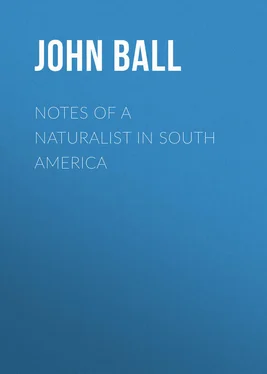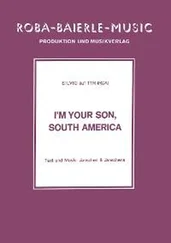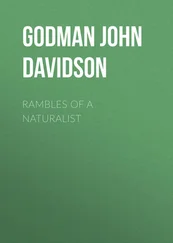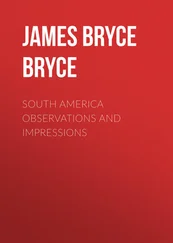John Ball - Notes of a naturalist in South America
Здесь есть возможность читать онлайн «John Ball - Notes of a naturalist in South America» — ознакомительный отрывок электронной книги совершенно бесплатно, а после прочтения отрывка купить полную версию. В некоторых случаях можно слушать аудио, скачать через торрент в формате fb2 и присутствует краткое содержание. Жанр: foreign_antique, foreign_prose, на английском языке. Описание произведения, (предисловие) а так же отзывы посетителей доступны на портале библиотеки ЛибКат.
- Название:Notes of a naturalist in South America
- Автор:
- Жанр:
- Год:неизвестен
- ISBN:нет данных
- Рейтинг книги:4 / 5. Голосов: 1
-
Избранное:Добавить в избранное
- Отзывы:
-
Ваша оценка:
- 80
- 1
- 2
- 3
- 4
- 5
Notes of a naturalist in South America: краткое содержание, описание и аннотация
Предлагаем к чтению аннотацию, описание, краткое содержание или предисловие (зависит от того, что написал сам автор книги «Notes of a naturalist in South America»). Если вы не нашли необходимую информацию о книге — напишите в комментариях, мы постараемся отыскать её.
Notes of a naturalist in South America — читать онлайн ознакомительный отрывок
Ниже представлен текст книги, разбитый по страницам. Система сохранения места последней прочитанной страницы, позволяет с удобством читать онлайн бесплатно книгу «Notes of a naturalist in South America», без необходимости каждый раз заново искать на чём Вы остановились. Поставьте закладку, и сможете в любой момент перейти на страницу, на которой закончили чтение.
Интервал:
Закладка:
ARRIVAL AT BARBADOES.
At daybreak on the morning of the 30th, in twelve days and seventeen hours, we completed the run of about 3340 nautical miles which separates Southampton from Barbadoes, and found ourselves in the roads of Bridgetown, about a mile from the shore. Being somewhat prepared, I was not altogether surprised to find that this first view of a tropical island forcibly reminded me of the last land I had beheld at home – the northern shores of the Isle of Wight. Long swelling hills, on which well-grown trees intervene between tracts of tillage, present much the same general outline, and at this distance the only marked difference was the intense dark-green colour of the large trees that embower the town and nearly conceal all but a few of the chief buildings. The appearance of things as the morning advanced quite confirmed the reputation of this small island as the most prosperous, and, in proportion to its extent, the most productive of the West Indian Islands. With an area not greater than that of the Isle of Wight, and a population of about sixty thousand whites and rather more than a hundred thousand negroes, the value of the exports and imports surpasses a million sterling under each head; and, besides this, it is the centre of a considerable transit trade with the other islands. Under local representative institutions, which have subsisted since the island was first occupied by the English early in the seventeenth century, the finances are flourishing, and the colonial government is free from debt. The average annual produce of sugar is reckoned at forty-four thousand hogsheads, but varies with the amount of rainfall. This averages from fifty-eight to fifty-nine inches annually, but any considerable deficiency, such as occurred in the year 1873, leads to a proportionate diminution in the sugar crop.
Among other tokens of civilization, the harbour police at Bridgetown appeared to be thoroughly efficient. As, about nine o’clock, we prepared to go ashore, we found on deck two privates – black men in plain uniform – who seemed to have no difficulty in keeping perfect order amid the crowd of boatmen that swarmed round the big ship. We had already learned the event of the hour – the fall of three inches of rain during the day and night preceding our arrival. This is more than usually falls during the entire month of March, and seemed to be welcomed by the entire population. On landing we encountered a good deal of greasy grey mud in the streets, but all was nearly dry when, after a short excursion, we returned in the afternoon. After a short stay in the town, where there was a little shopping to be done, and where some of my companions indulged in a second breakfast of fried flying-fish, I started with a pleasant party of fellow-travellers to see something of the island. It was arranged that, after a drive of six or seven miles, we should go to luncheon at the house of Mr. C – , the owner of a sugar-plantation, whose brother, Colonel C – , was one of our fellow-passengers. We enjoyed the benefit of the recent heavy rain in the comparative coolness of the air – the thermometer scarcely rose above 80° Fahr. in the shade – and in freedom from dust.
A small, low island, nearly every acre of which has been reduced to cultivation, cannot offer very much of picturesque beauty; nevertheless the first peep of the tropics did not fail to present abundant matter of interest. In this part of the world the dry season, now coming to an end, is the winter of vegetation, and, of course, there was not very much to be seen of the herbaceous flora; but the beauty of the trees and the rich hues of their foliage quite surpassed my anticipations. The majority of these are plants introduced either from the larger islands or from more distant tropical countries, that have been planted in the neighbourhood of houses.
One of the first that strikes a new-comer in the tropics is the mango tree, which, though introduced by man from its original home in tropical Asia, is now common throughout the hotter parts of America. Its widespreading branches, bearing dense tufts of large leathery leaves, make it as welcome for the sake of protection from the sun as for its fruit, which is a luxury that some persons never learn to appreciate. The cinnamon tree ( Canella alba ), common in most of the West Indian Islands, is another of the plants that serve for ornament and shade while ministering products useful to man. Of the smaller shade-trees, the pimento (probably Pimenta acris ) was also conspicuous, and very many others which I failed to recognize, might be added to the new impressions of the first day in the tropics. One of the most curious is that known to the English residents as the sand-box tree, the Hura crepitans of botanists. It belongs to the Euphorbiaceæ , or Spurge family, but is strangely unlike any of the Old-World forms of that order. Here the fruit is in form rather like a small melon, of hard woody texture, divided into numerous – ten to twenty – cells. If, when taken from the tree, the top is sawn off and the seeds scooped out, no farther change occurs, and it may be, and often is, as the name implies, used as a sand-box. But if left until the seeds are mature, the whole capsule bursts open with a loud report, scattering the seeds to a distance. Thinking that a small young fruit, if dried very gradually, might escape this result, I carried one away, which, after my return to Europe, I placed in a small wooden box in my herbarium. Some nine months after it had been collected it must have exploded in my absence, for, unlocking the room one day, I found the box broken to pieces, and the valves of the fruit and the seeds scattered in all directions about the room.
POPULATION OF BARBADOES.
Next to the vegetable inhabitants, I was interested in the black population of the island. The first impression on finding one’s self amid fellow-creatures so markedly different in physical characters is one of strangeness, and one is tempted to ask whether, after all, there can be any pith in the arguments once confidently urged to establish a specific difference between the negro and the white man. But this very quickly wears away, and a contrary impression arises. The second thought is that, considering what we know of the conditions under which the native races of Equatorial Africa have been developed during an unrecorded series of ages, and of the subsequent conditions during several generations of slavery, the surprising thing is that the differences should not be far greater than they are.
It would be very rash to draw positive conclusions from what could be seen in a visit of a few hours, but, undoubtedly, the general effect was pleasing, and tended to confirm the assertion that the difficult problem of converting a population of black slaves into useful members of a free community has been better solved in Barbadoes than in any other European colony. So far as the elementary wants are concerned, there was a complete absence of the painful suspicion so commonly felt as regards the poor in Europe and the East, that their food is either insufficient or unwholesome. With very few exceptions they all seemed sleek and well fed, and their clothing showed no symptoms of poverty. In the town their dress was generally neat, and most of the women made a display of bright colour in handkerchiefs and parasols. What struck me most was a general air of good humour and enjoyment. One may be misled in this respect by the facial characteristics of the black race, which, in the absence of disturbing causes, readily turn to a smile or a grin. But, whether in the streets of Bridgetown or botanizing among the fields in the country, and using the few opportunities of speaking to the people, the same impression was retained.
Their manner in speaking to whites seemed to imply neither servility nor yet the independence which characterizes the Arab or the Moor. A latent sense of inferiority seemed to be combined with a complete absence of shyness or apprehension, as in children used to kind treatment, and not too carefully drilled. We happened to halt near a spot where there was a cluster of labourers’ cabins, and a school well filled with small children. There had been a wedding in Bridgetown that morning, and as we halted two carriages passed, carrying the bridal party to some house in the country. All the inhabitants rushed out at once, and contended, young and old, in the most boisterous cheering. Perhaps this meant little more than the mere love of noise, as when boys cheer a passing railway train, but it argued, at least, the absence of any feeling of race animosity.
Читать дальшеИнтервал:
Закладка:
Похожие книги на «Notes of a naturalist in South America»
Представляем Вашему вниманию похожие книги на «Notes of a naturalist in South America» списком для выбора. Мы отобрали схожую по названию и смыслу литературу в надежде предоставить читателям больше вариантов отыскать новые, интересные, ещё непрочитанные произведения.
Обсуждение, отзывы о книге «Notes of a naturalist in South America» и просто собственные мнения читателей. Оставьте ваши комментарии, напишите, что Вы думаете о произведении, его смысле или главных героях. Укажите что конкретно понравилось, а что нет, и почему Вы так считаете.












